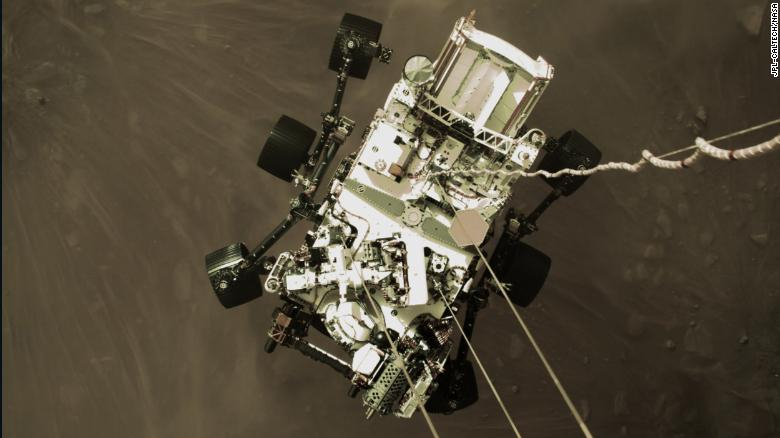In the vast history landthe dinosaurs They have captured human interest for centuries. It's scary. Tyrannosaurus Rex So graceful VelociraptorPopular culture and science have painted a picture of these creatures as fierce, cunning, and incredibly intelligent. But how accurate is this view? A new study has looked into this question, using advanced scientific methods to analyze them. Cognitive ability Who are these prehistoric giants?
In an attempt to uncover the mysteries of the dinosaur brain, a group of researchers from around the world The University of Bristol has conducted a comprehensive review of available data on brain size. Number of neurons Of various types. Herculaneum-Hozel (2023), one of the study’s lead authors, proposed an estimate of the number of brain neurons In species such as Tyrannosaurus RexWhich could provide clues to its intelligence. This new approach focuses on using the number of neurons as a tool Biology is related To understand cognitive abilities, a methodology that has been applied in research on current animals, but rarely to fossil species.
The study suggests that by estimating brain (The relationship between brain size and body size) and Number of neurons in dinosaursIt is possible to infer characteristics of their behavior and cognitive abilities. However, the results obtained have sparked controversy in scientific circles, because they challenge some preconceived ideas about the intelligence of these animals.
Neuron counting is a technique used to measure brain complexity in different species. In mammals, a greater number of neurons is usually associated with greater cognitive ability. Applying this technique to dinosaurs, the study by Herculano-Houzel (2023) suggests that dinosaurs Tyrannosaurus Rex It could have been between 3000 million and 5000 million of brain neurons. In comparison, Chimpanzees, known for their intelligence and ability to use tools, have approximately 6.2 billion neurons in the same area of the brain. This puts Tyrannosaurus rex within range of some extant primates, which may indicate that these creatures had a much higher level of intelligence than previously thought.
:quality(85)/cloudfront-us-east-1.images.arcpublishing.com/infobae/B57FB6T2VVBBZLJZXQGHTAUOXE.jpg 420w)
However, the study also highlights that these numbers are approximate and should be taken with caution. The difficulty of obtaining accurate data on species that became extinct millions of years ago poses significant challenges. Furthermore, there are inherent limitations in extrapolating data from modern animals to dinosaurs, since the latter had very different brain structures and biological needs.
Despite the impressive numbers presented, the Herculano-Houzel study was also A topic of criticism within the scientific community.One of the main concerns is that methodology It is used to estimate brain size and the number of neurons in dinosaurs. Scientists have pointed out that the estimation methods, based on comparisons with living species, may not be entirely accurate when applied to prehistoric creatures. In particular, the validity of using relative brain size as a measure has been questioned. reliable indicator Of the intelligence of dinosaurs, as this method does not take into account other factors such as brain structure and Neuron density.
Another point of criticism is the application of models. Enlightened Genetics To estimate the cognitive abilities of dinosaurs. These models, which are based on evolution and the relationships between different species, were revised in the study, and lower numbers were proposed for large theropods, such as Tyrannosaurus rex, compared to previous studies. Experts highlighted that phylogeny Dinosaurs are extremely complex, and any attempt to simplify them can lead to wrong conclusions.
:quality(85)/cloudfront-us-east-1.images.arcpublishing.com/infobae/XM7Q4QNOIFCQRIJHFYV7U65JUQ.png 420w)
Research on dinosaur intelligence is far from conclusive, and the latest study adds further complexity to the debate. Although the number of neurons and brain They are valuable tools for studying the brain, and should be applied to extinct species with caution. dinosaurs They had brains that were quite different from modern mammals and birds, so direct comparisons can be misleading.
Furthermore, the study also raises questions about the validity of this idea. Neurological variables As it predicts intelligence and behavior. Some scientists argue that although the number of neurons and brain size can provide clues about cognitive ability, they are not the only factors to consider. Other aspects such as brain organization Neural connections play a crucial role in determining intelligence And animal behavior.
As science advances, methods for studying dinosaur brains are likely to become more sophisticated. New techniques such as Photography Advanced techniques and computer simulations may provide new ways to estimate the brain size and complexity of these animals. However, until more accurate methods are developed, the intelligence of dinosaurs It will remain a subject of speculation and debate.
:quality(85)/cloudfront-us-east-1.images.arcpublishing.com/infobae/YNJWKHUULKCI5ZO5AKBA47HMD4.jpg 420w)
The Herculano-Houzel study is an important step in the right direction, but it also highlights the need to continue research using a critical and interdisciplinary approach. Only in this way can we uncover the truth. cognitive nature Of these magnificent creatures that once dominated the planet.
This is why dinosaur intelligence remains a mystery in many ways. Although the number Neurons and brain To provide a window into the past, it is essential to not lose sight of the limitations of these methods and to maintain an open approach to new evidence and theories. In time, science may finally shed light on how the giants of the past thought and acted.

:quality(85)/cloudfront-us-east-1.images.arcpublishing.com/infobae/YVMVI3LH2NG7HM7H43BCX4IROI.jpg)



